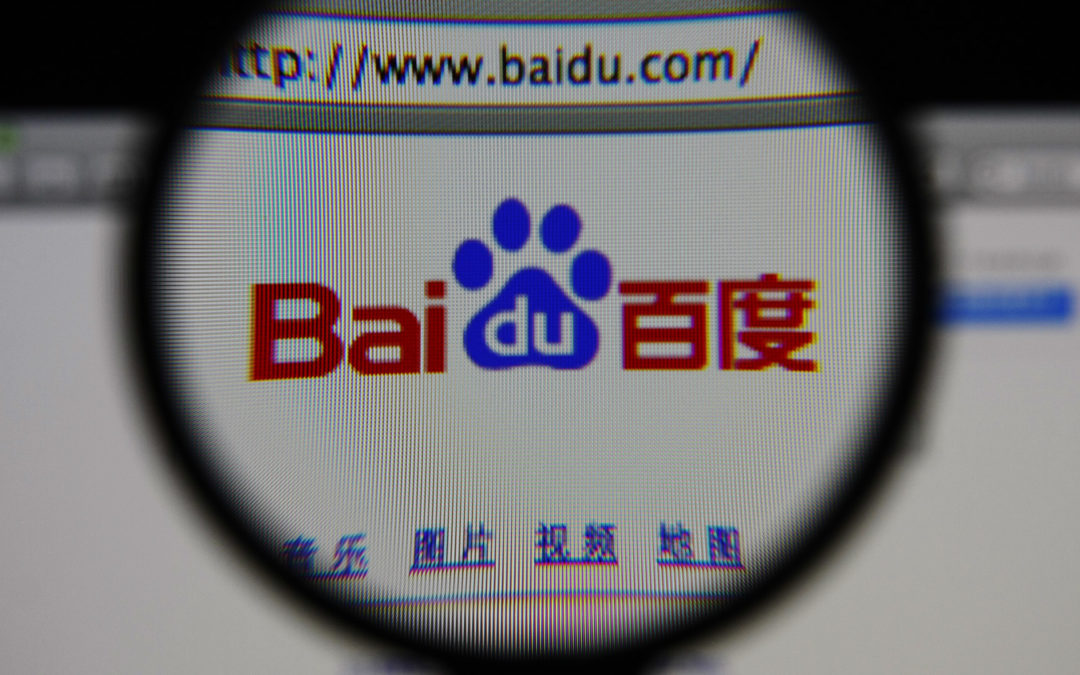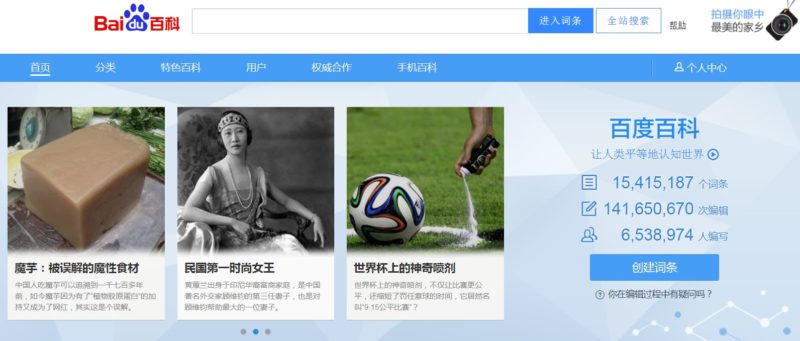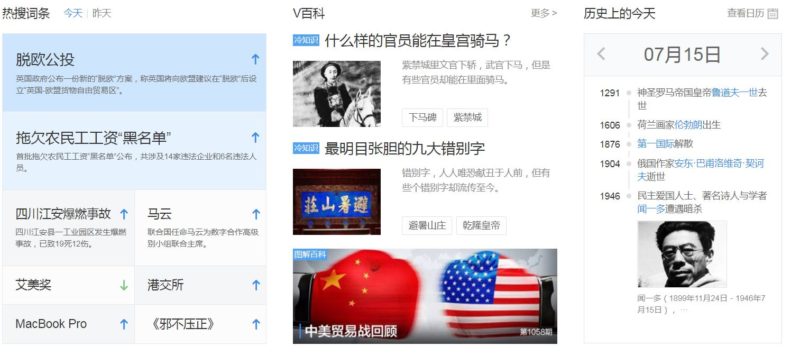Baidu Baike is the Chinese equivalent to Wikipedia and is one of the most visited websites in China. Baidu SERP prominently features Baidu Baike entries, therefore getting a page on this platform can propel brands to the top search results.
Here is our guide Baidu Baike.
Baidu Baike (百度 百科 in Chinese, translated as “Baidu Encyclopedia”) is a collaborative, web-based encyclopedia that is owned and produced by the Chinese search engine Baidu. The test version was released on April 20, 2006 and within three weeks the encyclopedia had grown to more than 90,000 articles and surpassing Chinese Wikipedia. In January 2018 Baidu Baike had more than 15.1 million articles.
Baidu officially declares that Baidu Baike serves as an online encyclopedia, as well as information storage for netizens. Baidu Baike claims “equality”, “cooperation”, “sharing” and “freedom” as the platform’s core values. It is connected with search engines in order to meet information needs of the users.
Baidu Baike Concept
At World Wide Web Consortium 2018, Baidu’s William Chang said that “there is actually no reason for China to use Wikipedia … It is very natural for China to make its own products.”
While using Baidu search engine, the link of the corresponding entry in Baidu Baike, if present, is placed as the first result or one of the first results.
Content restrictions
Articles or comments that contain the following types of content are not allowed:
- Pornographic, violent and “uncivilized” content
- Advertisement
- Personal attacks
- Content against morality and ethics
- Malicious, trivial or spam-like content
- Personal facts
Since Baidu falls under the jurisdiction of the Chinese government, it is mandatory to censor the contents of their encyclopedia in accordance with relevant government regulations. All editors must register accounts with their real names before they can create or edit articles. The administrators filter the edits before they become public.
As a result, Baidu Baike has an advantage over its competitors by complying with Chinese censorship laws. Since Chinese version of Wikipedia does not censor its own content, the government can block it while Baidu Baike remains accessible.
Structure: front page
The current front page of Baidu Baike was put into operation in 6 September 2012. At the top of the page displays the official Baidu Baike slogan “Let all humankind learn about the world”, as well as up-to-date information about the number of users and mentions. The selected content is presented at the bottom left of the front page.
The bottom right contains announcements, plans and projects. The information on the front page usually contains current hot topics, often related to featured news. In addition to these popular topics, there are also one-sentence summaries of the news. Baidu Baike also includes other channels such as nature, culture, geography and special topics such as core users, digital museums, etc.
Submissions
The access pages of Baidu Baike include telephone cards, texts and other supporting information. An earlier version allowed users to respond to pages, but this feature was removed after September 2008, coinciding with time when other major Western social media channels (Facebook, Twitter, YouTube) became inaccessible in China. The main language of Baidu Baike is Chinese, written with the simplified script, messages written in traditional Chinese, Korean, Vietnamese or Japanese are automatically translated.
Calling cards and texts
Baike telephone cards contain two parts: the description of an item and the basic information. The first is similar to the preface of an article, which provides a general introduction to the whole text. The latter uses a table to summarize basic information and statistics. Both are processed separately from the main part of the article. The main text is limited to 40 thousand bits, which corresponds to 20 thousand Chinese characters.
The earlier versions could only contain one image, but now 20 images and 20 albums can be included in an article. The item may also contain a link to a Baidu card, dynamic screenshots and videos. The information cited is below the main text, which does not distinguish footnotes from other details. However, the quoted images do not specify the source.
Supporting information
Most pieces of supporting information are located at the bottom or the right of the page, except for scientific terms, which are pushed upwards. Usually supporting information is automatically generated by the system, with some manual editing. Supporting information on the right side of the page contains personal information, statistics, today in history, honor contribution and current trends. Statistics include the number of page views, the number of editors, the latest updates, information about makers, etc. Editors who contribute complex articles are also mentioned and honored.
A user can see a database, the Baidu dictionary and related items at the bottom of each article. The celebrity articles have added databases with their individual songs, albums and videos. The user recommendations section is used to collect feedback about the article.
Editing Encyclopedia entries
When an editor makes an edit that has been approved, the editor’s account receives a certain number of experience points based on the complexity of the operation (1 for the simplest operations, 5 for a complex operation). When an editor successfully completes the requested job, the editor receives experience points and a predetermined number of welfare points that can be used to make purchases on Baidu. Editors are divided into 15 levels with corresponding ‘Encyclopedia titles’ (百科 头衔) based on their accumulated experience points. In 2012, the names of the titles were changed from modern business-sounding titles to titles that resembled the Chinese imperial exam and the Confucian scholarship.
Content and categories
In contrast with a traditional encyclopedia, the information in Baidu Baike is somewhat broader. Baidu Baike also contains food recipes, film products, internet programs and video games, as well as their encyclopedic content. However, unlike Chinese Wikipedia, Baidu Baike never gives a strict definition of the difference between an encyclopedia entry and a dictionary entry. There are also many statements about diction and common phrases.
In addition to articles, Baidu Baike contains several special pages:
- A Sandbox entry (编辑 实验), giving users the opportunity to practice editing;
- Help, which offers terminologies, basic settings, prescriptions, user titles, etc.
- User page, called “Baidu Authorized ID” which is similar to that of Wikipedia. However, these are considered an encouragement for advanced users – very few editors receive the privilege to create their own page;
- Baidu Baike has an open policy for adding entries and supports categorized search functions. The classification is based on the characteristics of an item, but not on the quality, and there is no limit to categorization. Baidu Baike now has an elementary categorized page and tree. Part of the open layout can be set at levels, but catalogs with similar meanings cannot be merged or redirected.
Source: Wikipedia






